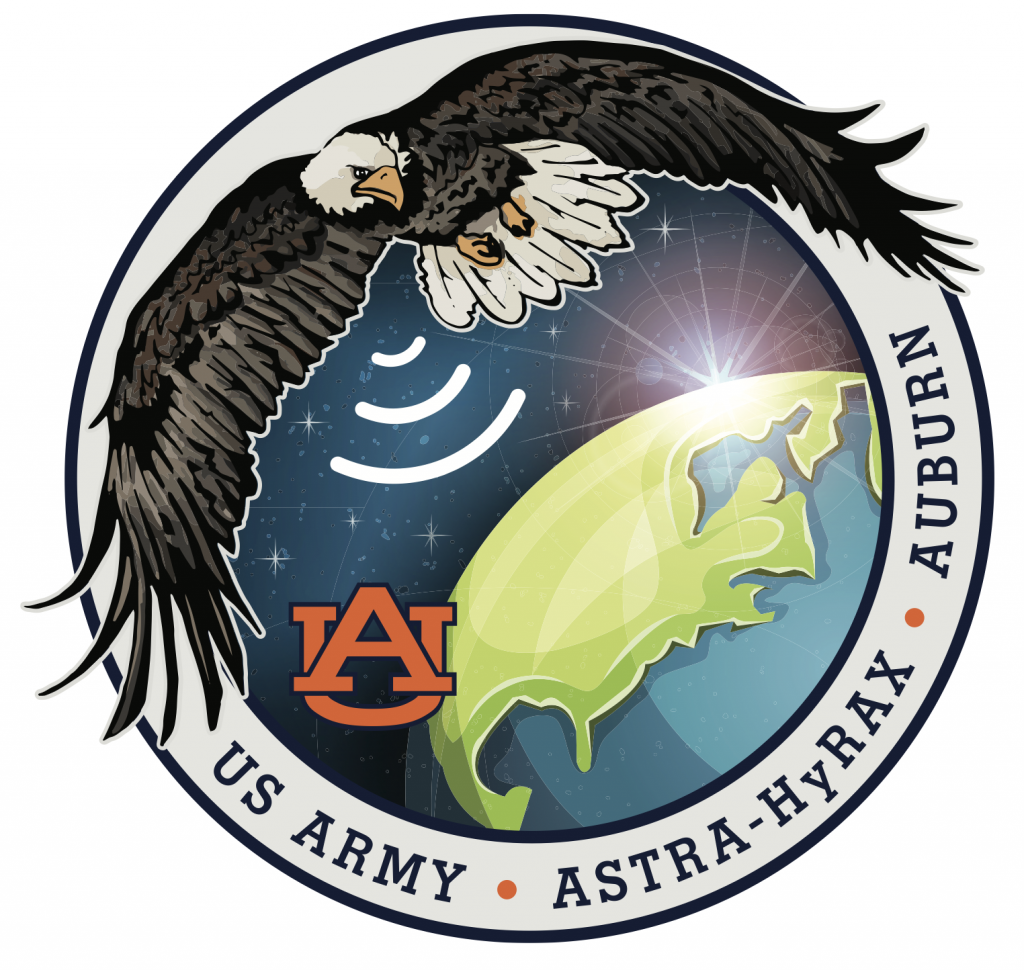
Auburn Satellite Testbed for Retrodirective Array – Hybrid Retrodirective Array in X-band (ASTRA-HyRAX)
Mission Overview
The Auburn Satellite Testbed for Retrodirective Array with Hybrid Retrodirective Array X-band, or ASTRA HyRAX, is the newest mission under development in AUSSP. The mission aims to use a hybrid retro directive array (HRA) payload developed at Auburn to characterize the direction of signals from target of opportunity.
In addition, the mission will fly an X-band radio designed in house at Auburn. This custom radio system is intended to be used on other mission, e.g., TRYAD.
The mission is funded by Army – Space and Missile Defense Command (SMDC)
Experiment
The main payload on the mission is the Hybrid Retrodirective Array in X-band (HyRAX). This system was developed in house and is scaleable to meet power and accuracy requirements. The payload uses a phased array to receive RF signals and is then able to determine the direction of arrival based on the phase difference between each element in the array. The payload can then store this information or use it to send a signal back towards the source. The version flown to be flown on ASTRA-HyRAX will be a small 2×2 array which will demonstrate the system’s viability and performance in the space environment with know ground targets. In addition, a larger HRA will be co-located with the Auburn RF tracking ground station to provide additional data and test opportunities.
The main experiment conducted during the mission will be testing the satellite’s HyRAX payload. This can be broken down into a few simple steps.

- The satellite will receive a command from the Auburn ground station to conduct an experiment pass over a “target of opportunity.” The satellite will continue its nominal operations until it comes into range of the target.
- As the satellite approaches the target, it will slew the 2×2 HyRAX array towards where the target of opportunity should be. This is done in order to lengthen the experiment window, and increase the number of experiment opportunities. As the satellite enters into range of the target of opportunity, it will turn on the HyRAX payload and begin calculating the vectors of incoming RF signals. Each one of these signal will be tagged with GPS location and time.
- As the satellite goes out of rage of the target, it will turn off the payload and return to nominal operations
- Once the satellite passes over the Auburn ground station, it will downlink the experiment telemetry. This pass will also allow for the in house X-band radio to be tested. In order to test the X-band radio, the satellite will simply use it to downlink the experiment telemetry to the Auburn ground station. The data form both the HyRAX experiment and the X-band downlink will then be assessed.
- Once the data has been downlinked, the satellite will return to nominal operations.
Subsystems
EPS – Custom designed and built in-house, Li-ion batteries, solar panels one procured from a commercial vendor
ADCS – Cubespace 3-Axis ADCS
CDHS – Beaglebone Black Industrial OBC on custom CDHS PCB along with Novatel OEM719 GPS + Taoglas antenna
COMMS – Endurosat UHF TT&C radio and UF antenna assembly, X-band downlink + custom path antenna
MECH – Endurosat 3U structure
PAYLOAD – custom designed X-band radio and hybrid retro directive array patch